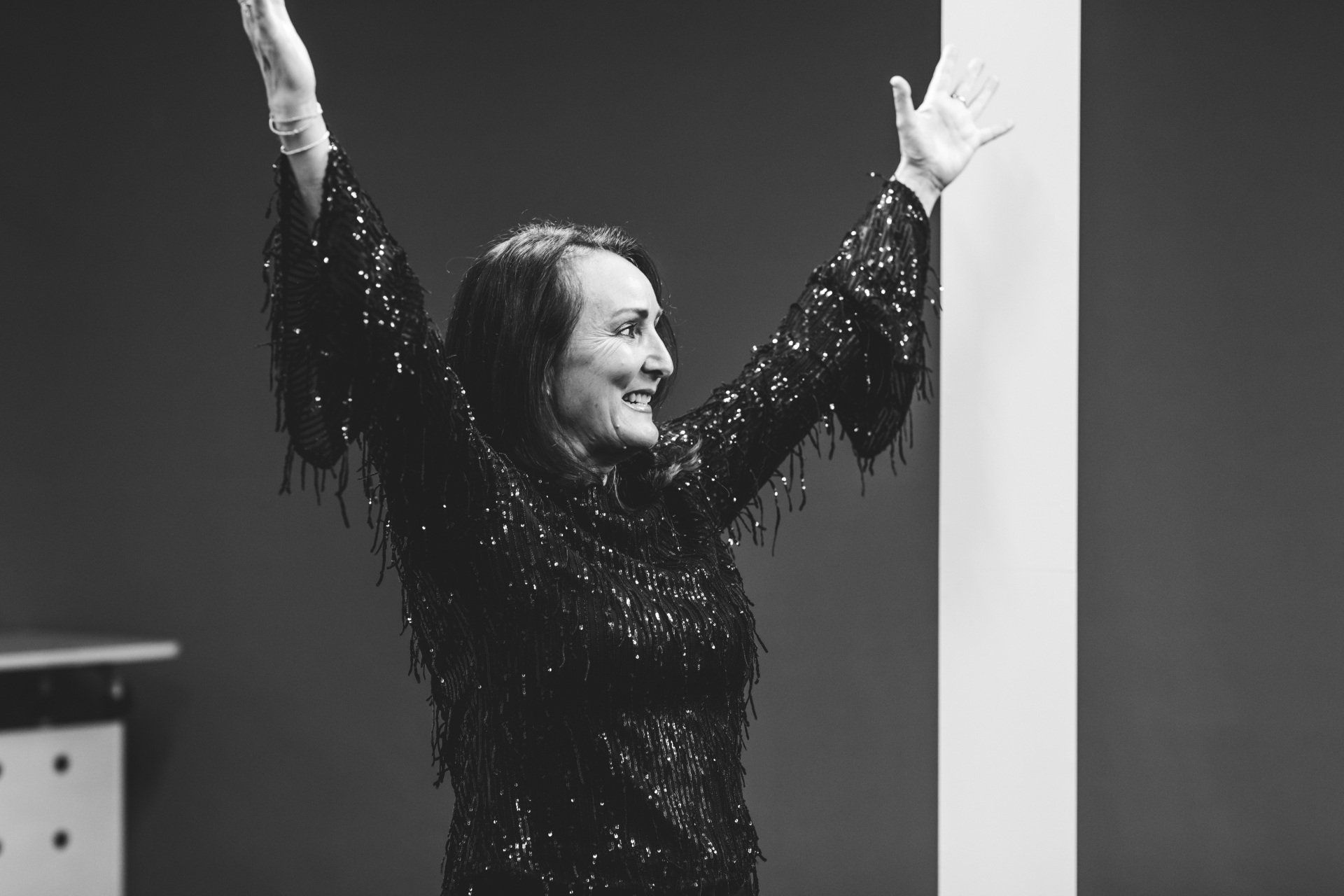What I Learned From Massaging An Obese Woman
Lee Kelly • March 4, 2021
I’ve massaged lots of overweight people, but she was obese.
As she stood in front of me, I met her eyes and searched in my heart for the openness and acceptance I’d need for this massage. I wanted her to feel safe.
But I was freaking out!
Would the massage table be strong enough? Would she fit on it? What if it collapsed? She was huge!
I left the room to allow her time to get on the table and calmed myself. Deep breaths.
I entered the room. Her body was spread over the table. Overlapping, everywhere, soft wobbly flesh.
I began to massage her, navigating the expanse of her enormous back. It was the biggest, fattest body I’d ever touched.
Then I found my rhythm, I tuned into the contours of her back. I swept over the deep creases between the rolls of fat. I began to appreciate the beauty of her form, the softness of her skin, the malleability, the fullness, the receptiveness of her body.
My strokes moved in harmony with her breath. I sent love and energy through my hands. There was no revulsion, no judgement, no fear. Simply the connection of my hands on another human being.
When the massage ended, I left the room to give her time to dress.
I felt relief. And shame that I’d initially reacted so badly to her size. She was a beautiful person who seemed completely comfortable in her body. But I didn’t know this for sure.
Often very overweight clients will apologise for their size or make a comment about it. “I hope this is a strong table?” or “I know, there’s a lot of me.” I imagine there’s a fear of being judged by the therapist, that they’ll be grossed out by the excess weight.
I always try and look beyond the external appearance and yes, to massage an obese person requires lots of energy. It’s about being receptive to what that person or body needs. I find athletes with hard, muscly bodies just as much work.
As I watched her walk away that day, I felt happy I’d given her such a lovely massage, gotten over myself and my worries about her size.
I was also really impressed by her ease and acceptance of her body — no apologies or side comments.
I don’t know how she felt about her body. All I know is the experience of massaging her caused me to reflect upon the warped perception I often have of my own body.
Regardless of my size or weight on the scales, one of my biggest challenges is to feel good about my body. It’s a daily battle to look in the mirror and really like or even LOVE what I see. I know I’m not alone. Most women I know are unhappy with their bodies.
I have a friend with a beautiful body. She doesn’t think so!
She’s on a constant quest to lose those ‘5 extra kilo’s’. I’ve been hearing this from her for over 20 years! Over that time she has resorted to liposuction twice, a tummy tuck, and two boob jobs. And she’s always on some sort of diet plan.
Is she any happier with her body?
I’m not against anyone getting help to improve their body shape — cosmetic surgery can do amazing things for some people. What concerns me is the constant seeking for more and when that one more thing is achieved, only then will you be happy with your body.
There are so many disturbing trends developing. It’s not just a boob or nose job now, it’s becoming way more intricate. Chopping off bits of labia in a labiaplasty is now a popular option particularly with younger women.
A woman who recently underwent a labiaplasty says,
“We’re in this body positive era which is great, but we’re looked down upon if we want to change something,” she said. “If you can do something that is going to make you happier, why wouldn’t you do that?”
How about choosing to love and accept your body now? How about digging deep and finding your happiness from within? How about realising your body may never be 5 kgs lighter? Or that your labia is perfect as it is?
Maybe it’s time to give up the endless worrying and wasted moments of wishing you had a different body.
I have a daughter who struggles with her weight.
I affirm her by focussing on who she is, her gifts, her inner beauty. Teaching her that she is so much more than her external appearance. She’s gorgeous.
She worries about getting a boyfriend.
“I see other big women with boyfriends, so I know it’s not about my size. It’s about feeling good about myself regardless of my weight.”
And that’s the truth of it.
Regardless of our body size or appearance,
it’s how we feel about ourselves that matters.
I have another friend who is very overweight and loves to wear close-fitting jumpsuits. She looks incredible. Her bum is ginormous! And I can’t take my eyes off it. It’s so sexy. She rocks it, completely. No shame. Just glorious, curvy, voluptuous woman.
We are so much more than we appear, so much more than our physical body.
The real gift we can give another is to see beyond the external appearance. To not judge, condemn or criticize because they look fat, weird or different from us.
The gift we can give to ourselves is self-love and acceptance. To look in the mirror and say,
“Hey body, you’re so beautiful.
Thank you for sustaining me.
I’m lucky to have you.”

I discovered Power Posing several years ago when I listened to a TED Talk by Amy Cuddy , a Social Psychologist from the Harvard Business School. Her studies affirm what I have been observing for years as I coach people to become aware of their body language, how it affects the way they feel and how they speak in public. Amy selected two groups of MBA students. One group sat or stood in positions of low power - bodies closed, legs crossed, arms folded, shoulders hunched forward. The second group sat or stood in positions of power - arms straight out to the side or above their head, shoulders open and back, legs in a wide, open stance. Both groups held these open or closed body positions for 2 minutes and then their saliva was tested. Amazingly, the power poser's showed a 15% increase in testosterone , the hormone that configures our brain to be more assertive, confident and creative. The low power poser's showed an increase in cortisol, the stress hormone. Both groups undertook a series of games and exercises after the posing and the power poser's showing greater rates of concentration, aptitude and creativity. We can change the physiology of our bodies simply by changing the the way we position ourselves. When preparing to speak in public, it is important to be aware of our body language - before and during our presentation. Power Posing is a quick and easy way to help combat nervousness and prepare us to speak with more confidence and assertiveness. It can help us feel more powerful. Find a quiet place to open your body for 2 minutes - hold a power pose and literally feel and know your energy is increasing. When waiting for your turn to speak, make sure your body is open - stretch your arms above your head, out to the side, roll your shoulders back. If sitting in a chair, be as open as you can - uncross your legs, straighten spine, roll shoulders back. Take a deep breath. Power posing is a fantastic way to prepare yourself for any life activity. And if you want to increase your confidence and presence as a speaker, power posing is an incredible tool.

How do we prepare and harness our mind before speaking? Why is this important? I've learned, the thoughts we keep thinking create beliefs about ourselves affecting how we live our lives and how we perform as a presenter. I always invite the people I'm coaching to investigate the dominant thoughts and beliefs they have about themselves. I ask them to do a 'brain dump' of all the negative, limiting thoughts they have. And these are often just the ones they're aware of! So many of our beliefs are unconscious and have been learned in childhood or passed down to us through our families. Often they begin with thoughts and beliefs specific to public speaking: "I speak too fast", "I stutter and garble my words", "I say um all the time", "I always forget my words", "My stories aren't interesting", "I hate the way I sound". Then as we peel back the layers, the negative thoughts and beliefs become more encompassing: "I'm a terrible speaker", "I'm scared of what people think of me", "I'm scared of being judged", "I don't feel of worth", "I'm not good enough". The most consistent and underlying limiting belief I've discovered is: "I'm not enough". Who am I to be sharing my thoughts, ideas and stories with you? Who do I think I am? I'm just not worthy, not good enough, not interesting enough, not clever enough, not attractive enough, just NOT ENOUGH!! The first step to overcoming and replacing these limiting thoughts and beliefs is to become aware of them. Catch them as they subtly and sneakily enter your mind. Don't beat yourself up for having them. Just observe and replace them with kinder, more affirming thoughts. "I speak too fast" to "I'm a well paced and measured speaker" "I say um all the time" to "I use pauses effectively" "I always forget my words" to "I remember my words with ease" "I'm a terrible speaker" to "I'm a confident speaker" "I'm not enough" to "I'm enough" An Affirmation is a short, powerful phrase we repeat to ourselves as often as possible so our mind begins to believe and act upon it. Remember a belief is simply a thought we keep thinking. Change our thoughts, change our beliefs, transform our lives. When we first create an affirmation it can be hard to believe and our mind condemns it. We know we always forget our words! We know we're a terrible speaker! This is the moment when you need to trust the process . Trust, as you replace a limiting thought with a new, affirming thought encouraging a new way of thinking or being and then repeating this thought as often as you can - your mind will come to believe this thought and a new belief is created. Your external world will then begin to reflect this new belief. Affirmations can seem too simple to be believable. Try them, they work! Luke and Mr Kuze When my son Luke was a 14 year old school boy, his favourite class was Japanese. He excelled in learning this language and he had an amazing memory. It was time for the yearly Japanese speech and Luke had prepared well. He knew his speech perfectly and planned to present it using no notes. Yet, a little nagging voice inside kept saying, "You might forget your words", "You should use cue cards just to be safe". The class was encouraged by the teacher Mr Kuze to use cue cards if they needed to - after all, it was a different language. But Luke knew he could remember it so why was he having this thought of needing cue cards? We talked about it. I asked him where this thought had come from? Why did he think he needed cue cards when he was so sure he would remember his speech? On reflection he realised the rest of his classmates were all using cue cards and this was the expected and encouraged thing to do. Luke was doubting his own ability and hooking into the belief that cue cards were necessary because a Japanese speech would be too hard to remember perfectly without them! Once this limiting belief was uncovered, Luke replaced it with, "I remember my Japanese speech perfectly" ,"I'm well prepared and speak confidently without cue cards". However, on the day of the speech, Luke had his cue cards tucked discreetly in his shorts pocket. Speakers before him all used cue cards and when it was his turn, he walked up to the front of the classroom and pulled out the cue cards as everyone else had. After speaking for a few moments, he realised the cue cards were a hindrance - his speech was flowing and he remembered everything he'd prepared. The cue cards disappeared back into his pocket and he finished his speech reinforcing the new belief - "I'm an amazing, confident speaker and I remember all I want to say!" As Luke sat down, Mr Kuze stood up, clapped his hands and exclaimed, "Excellent, Excellent". Luke received the top mark in the class for his speech. He also learned the power of harnessing his mind.

When it comes to speaking in front of others, the most powerful non verbal body language we engage in is what we do with our eyes. I remember when I was at high school and preparing to give one of the dreaded yearly speeches in English class. The teacher advised us to just fix our eyes on a spot at the very back of the room if we were feeling nervous. I was 16, it was my sixth form year and I was required to give a speech on someone famous. I chose Donald Duck! I learned my speech perfectly, I was well prepared, but I was terrified. I hated public speaking and managed to avoid any classes or activities that required standing up in front of a group of people. As I sat at my desk waiting for my turn to speak, the fear was so intense I wished I was dead. My name was called, I walked to the front. I didn't need notes as I'd memorised it. I faced the class...but I couldn't look at them. It was just too intimidating. The advice to look above them at the back wall was forgotten. I turned away from those faces watching me and gave my speech looking out towards the windows. Not once did I catch the eyes of my classmates! How do you think it went? Did I make an impact? Did I connect? Well, my friends remembered little about my speech and the history of Donald Duck. They have never forgotten how I refused to look at them as I spoke. I was teased for years! Consistent and continued eye contact as we speak is how we connect with others. As we connect with our eyes we can feel into the essence of the other person, we can really see them - who they are, their integrity, their honesty, their authenticity in that moment. And they see us! When we are public speaking, eye contact is essential for us to reach into our audiences hearts and convey the messages we're sharing. How much eye contact is enough? It's good to aim for 2-3 seconds of eye contact from one person to the next. This can depend on the size of the audience you're speaking too. In a small to medium sized group, aim to sweep your eyes over the whole group so they all feel included. It's important to not just flick your eyes around without a meaningful connection with anyone. Aim to pause for those few seconds and feel the connection. In a larger audience, aim to connect eyes with those in the first few rows of people and as far back as you can. As you make the effort to fully engage with your eyes, it becomes a natural and easy thing to do. When we're nervous it's tempting to not look at anyone and instead focus on our notes, the roof, the back of the room etc...However if we can have courage and find a friendly face, meet their eyes, pause for 2-3 seconds, really feel into that connection, then there is a wonderful exchange of energy and support that takes place. You feel supported. They feel seen. Your words have much greater impact and power. Practice using more eye contact in your daily life with the people you come into contact with. Think about the 2-3 second timeframe. Try going longer and see how that feels. In the courses I run I often get the group to hold eye contact with each other for up to 10 seconds! This is an intense experience and good practice to realise how easy 2-3 seconds is. As you practice your daily eye contact, become aware of how you feel as you consciously hold the connection with the other person. Bring this into your public speaking and see what happens. You'll be transformed into an authentic, powerful speaker!


